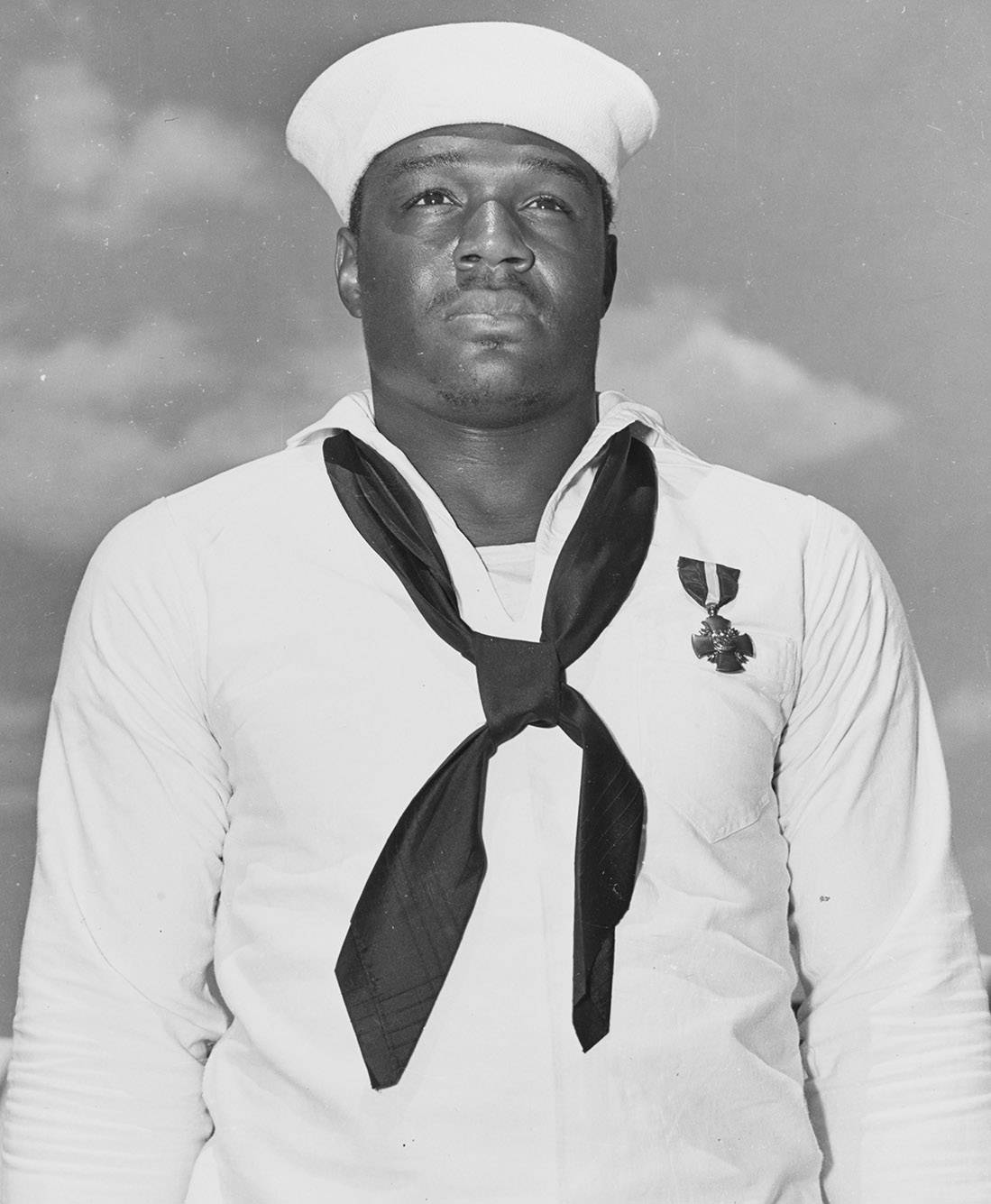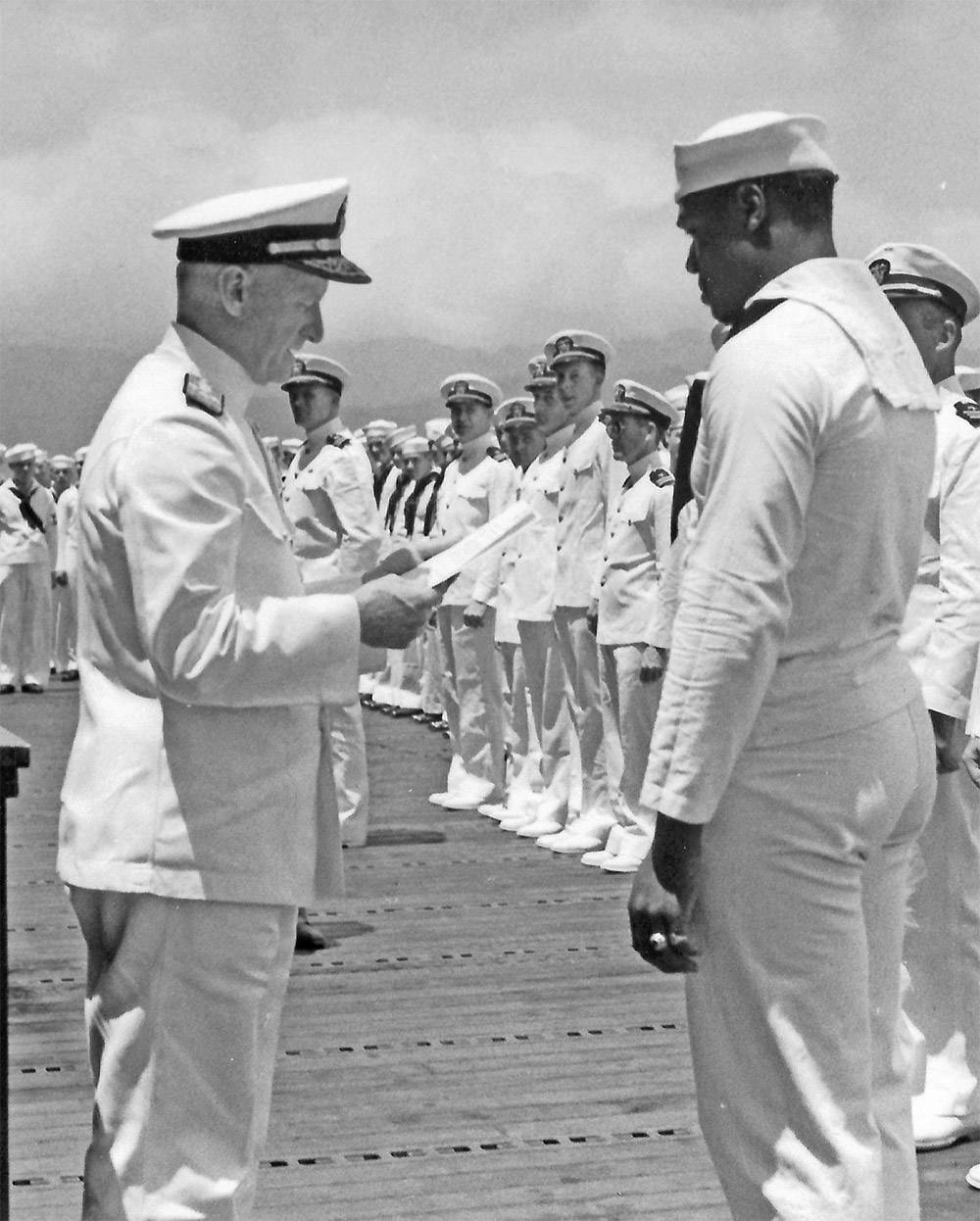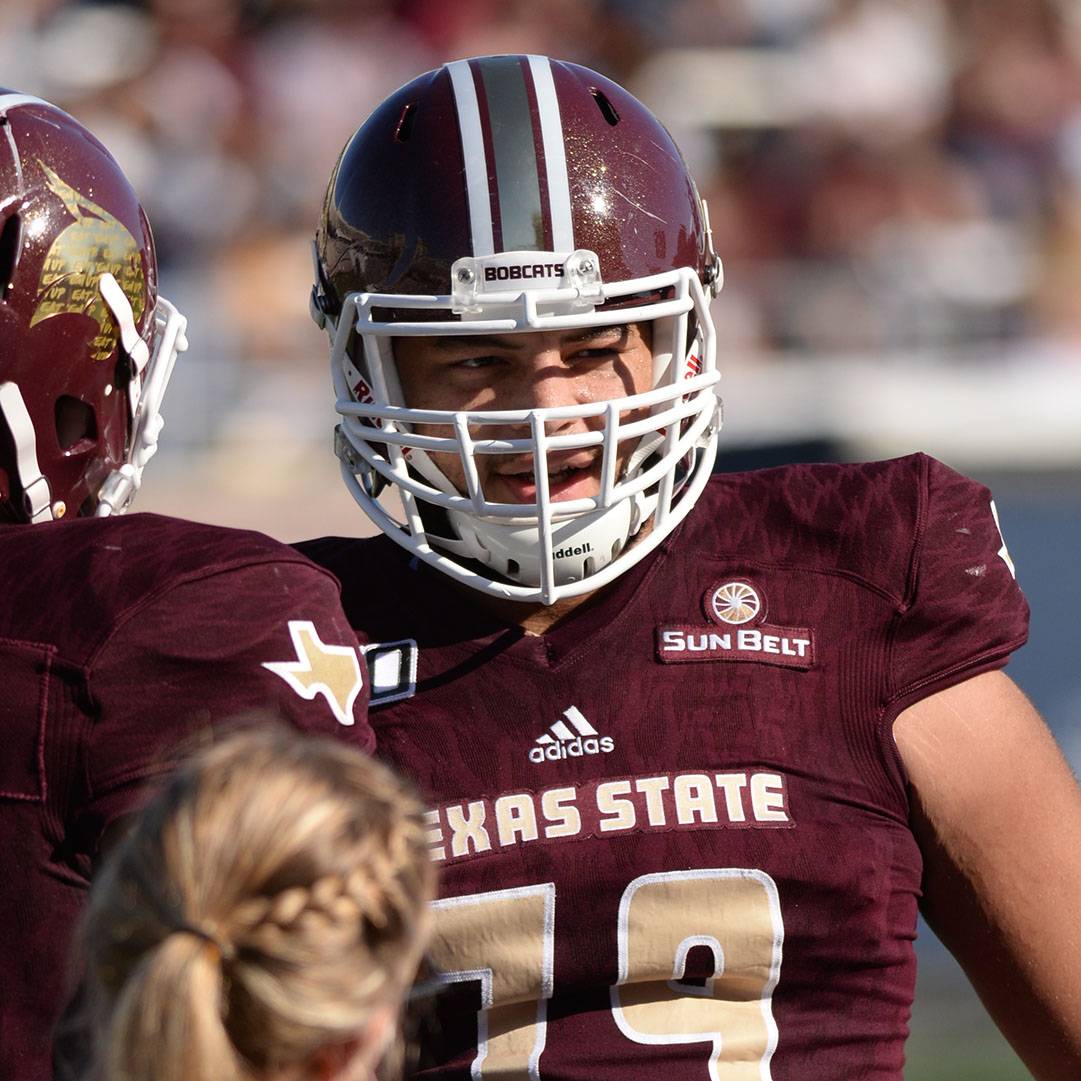Two Texas State students related to American Hero Doris Miller
Julie Cooper | February 26, 2020

In January, the U.S. Navy announced its newest aircraft carrier will be the USS Doris Miller. It will be the first aircraft carrier named for an enlisted sailor and the first named for an African American.
LaMarriol Smith never met Doris Miller, her first cousin three times removed. She was born 20 years after this World War II hero was killed in action. But growing up with her family in Texas, she had heard stories of the man who would later be immortalized in the movie “Pearl Harbor” and on a U.S. stamp.
Today, LaMarriol Smith is a student in the PhD program in adult, professional, and community education in the College of Education at Texas State University. Her dissertation explores “The Characteristics/Behaviors of Women of Color in Senior Leadership Positions in Higher Education.” She also has a consulting business, LLSmith Enterprises. On February 16, 2020, as part of Black History Month, she spoke at the Calaboose African American History Museum about Doris Miller in a talk titled, “Doris Miller: The Magnitude of his Actions.”
Another Texas State student is a distant cousin of Doris Miller: Jaydan Smith, an offensive lineman on the Bobcat football team (#79). Ernie Smith – Jaydan’s father who attended Texas State in the late 80’s – is LaMarriol’s first cousin.

Doris Miller was born in Waco in October 1919. LaMarriol says Miller’s mother, Henrietta, named him for the midwife who delivered him. In the military his name was changed to Dorie, either because of a typo or as LaMarriol says, “the military thought it was too feminine.”
As a 22-year-old in the segregated Navy during World War II, Miller was a crewman on the battleship West Virginia that was tied up in the harbor of Pearl Harbor. He was classified as a “Mess Attendant Third Class.” When the attack by the Japanese began on Dec. 7, 1941, Miller was doing laundry below deck. The 6 foot 3, 200-pound Miller was ordered up to the bridge to help evacuate the captain. Miller placed the captain, who was mortally wounded, in a sheltered spot and Miller, with no previous training, manned the Browning 50 caliber gun and fired on Japanese aircraft.
The first news reports out of Pearl Harbor did not name Miller. He was referred to as “an unknown Negro sailor.” Only later under public pressure was his name released and he was credited with shooting down Japanese planes and rescuing sailors from the oily waters of the bay.
On the orders of President Franklin Roosevelt, Miller was eventually awarded the Navy Cross, which was presented to him by Adm. Chester Nimitz. The citation reads as follows:
For distinguished devotion to duty, extraordinary courage and disregard for his own personal safety during the attack on the Fleet in Pearl Harbor, Territory of Hawaii, by Japanese forces on December 7, 1941. While at the side of his Captain on the bridge, Miller, despite enemy strafing and bombing and in the face of a serious fire, assisted in moving his Captain, who had been mortally wounded, to a place of greater safety, and later manned and operated a machine gun directed at enemy Japanese attacking aircraft until ordered to leave the bridge.
Following Pearl Harbor, Miller went around the country on a war bond tour. He was also featured in a Navy recruiting poster. Eventually he was promoted – to Cook Third Class – and assigned to the escort carrier Liscome Bay with a crew of 900.
In November 1943, the Liscome Bay was torpedoed and sank in 23 minutes. Miller was among the crew members who perished.
In his hometown of Waco, a nine-foot statue of the sailor was unveiled in 2017. The Smithsonian National Museum of African American History and Culture also recognizes Miller with an exhibit. There have been many schools, parks, community centers and military sites named for Miller. In San Marcos, Doris Miller Middle School honors him.
LaMarriol still hopes that Miller will posthumously receive the Medal of Honor. She is not alone in that. In addition to her family members, there have been lobbying efforts by veteran groups, politicians and civil rights organizations.


Share this article
For more information, contact University Communications:Jayme Blaschke, 512-245-2555 Sandy Pantlik, 512-245-2922 |